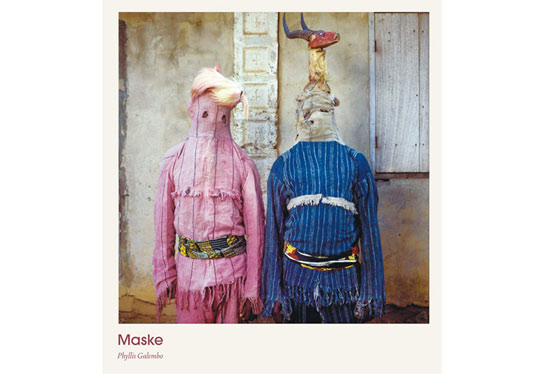Review: Maske by Phyllis Galembo

In our Western world we have either lost or appropriated the pagan rituals that ruled Europe before Christianity took over. In fact, those rituals are so alien to us that we do not even realize that they still exist as relics in some of the “holidays” we celebrate (just look into the pagan roots of various aspects of Christmas to get an idea what I’m talking about). Where pagan rituals managed to survive, they usually strike us as well, weird. For example, most people will be somewhat familiar with an image like this (it conveniently fits into our general visual culture), whereas something like this (here is a page explaining the background) will probably cause different reactions. I’m writing this review a few days before Halloween, but I can’t imagine someone walking around with such a Perchta mask. (more)
Masks in general are not part of our culture any longer. The various European carnival festivals aside, masks were also used in ancient Greek theater (just like Japanese Noh theater uses them). And there probably are many more occasions where masks were used. As it turns out, masks still play a fairly significant role in Africa. I had no idea that that was the case until I read Chika Okeke-Agulu’s introduction to Maske by Phyllis Galembo. Needless to say, my general ignorance of the various African rituals and festivals (which might be excused, given the dearth of information other than the usual photojournalistic gruel coming from that continent) had prevented the book from entering my personal radar screen before the publisher emailed me and asked me whether I was interested in reviewing it.
Visually absolutely stunning, Maske might - or maybe should - be considered more than “just” a photobook. In equal part, it is an anthropological study. The fantastic introduction by Chika Okeke-Agulu sets the stage for a serious of distinct chapters, each focusing on one country, with short, yet very descriptive introduction. To give you an idea why this is rather interesting, here’s a quote from the introduction:
“[There are] three key motivations for the persistence of masking in contemporary Africa. First, while in some communities the ritual and religious functions of masking remain important, in many other it is the theatrical, social, or - especially - political function that has become ascendant. […] Second, for many in Africa, masking remains a vital component od alternative social practices informed by deep distrust of, and unfamiliarity with, socio-political and economic structures established by the colonial and postcolonial state. […] Third, masking is powerfully resonant to aspects of contemporary experience overlooked by secularism or the new faiths emerging at the crossroads of Christianity/Islam and traditional African religions.”
Needless to say, you might wonder whether Maske does not in fact perpetuate an overly exotic image of Africa. But especially once you’ve read the introduction, you will realize the rich cultural heritage contained in masking. Everything else follows from there, because one of the many things that we almost never get to see is the cultural heritage of that incredibly diverse and complex continent.
Of course, a single book will never succeed in helping us overcome all our ignorance of Africa. But it might - in this case: it will - expose us to something that will make use see the world in a very different light. And therein seems to lie the key to viewing photography from Africa - or from any other place: Photography that will stay with us, photography that will truly inform us doesn’t tell us about the other. Instead, it offers us an experience that ultimately is shared with the portrayed - so that, despite the differences in life styles (or whatever there might be) we realize what’s at stake.
Maske, photography and short essays by Phyllis Galembo, introductory essay by Chika Okeke-Agulu, 208 pages, Chris Boot, 2010